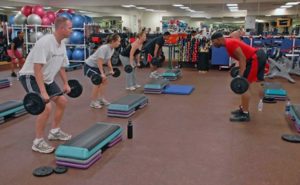What Shoes Are You Wearing For Squats?
Squats. It seems like a simple exercise, when you’re watching someone else. Their pose seems perfect. Heels flat on the ground, posture ideal. They also make it look easier than it is.
If you’re having trouble with your posture and footing, it might be due to your shoes. Your footwear will play a key role in how you perform a squat. Whether you are using weight training to “bulk up” or squats are just a part of your workout routine, your shoes will make a difference in your performance.
Do You Have to Wear Weightlifting Shoes?
Strolling through a gym, you’ve probably seen weightlifters wearing everything from Converse to minimalist shoes. Some people even prefer to perform squats barefoot, and that’s okay if they keep proper footing and posture.
Everyone has their preferences when it comes to their athletic footwear. This means that what works great for your lifting buddy, might not be the best choice for you. So you can improve performance, and prevent some common lifting injuries here are some of the popular types of shoes often worn for squats.
Try out as many types as needed, until you find the pair that are perfect for you.
Weightlifting Shoes
You don’t have to wear weightlifting shoes for squats, but it’s probably a good idea if you’re a beginner. According to The International Weightlifting Federation (IWF), “the purpose of weightlifting shoes is to protect the lifter’s feet and provide a firm, stable surface.”
When you’re just starting out, keeping your heels flat can be difficult. A pair of weightlifting shoes can help you resolve this problem. The stiff sole, combined with the raised heel will give you the support you need, while helping you maintain your footing. Weightlifting shoes can help you keep your posture upright, even when you’re performing deeper squats.
Converse
High-tops, and low-tops are both popular with weightlifters, and Converse come with several advantages.
- Reduced risk of slipping/sliding
- Rubber sole provides traction
- Lower risk of ankle rolls
Most experienced trainers do agree, you should be able to keep your heels on the ground before you slip on a pair of flat soled shoes.
Indoor Cleats
It’s surprising, but indoor cleats are great for squats. The emphasis is on “indoor”, since these shoes won’t tear up the floor. Indoor soccer shoes still have a flat sole, but they also provide more support than Converse. These shoes also have plenty of tread so slipping won’t be an issue.
If you love performing squats in flat soled shoes, but find that Converse are little too bulky, indoor cleats might be what you need to boost your performance to the next level.
Minimalist Shoes
If you love lifting in your bare feet, but it’s not allowed at your gym, minimalist shoes might be what you need. These “5-fingered” shoes allow you to freely move your toes, and you can even use them to grasp the mat. This way, you have additional support and balance when you are lifting heavier weights. You also have the bonus of a little protection from the gym floor.
What to Expect From a Pair of Weightlifting Shoes
Beginners and experienced lifters all agree that weightlifting shoes take a bit to get used to. The raised heel, usually around ½ inch for squats, can make you feel like you’re losing your balance and that is an uncomfortable feeling for anyone.
The slight incline can also make you feel that your squats are weaker. Don’t worry, these feelings are temporary and disappear once you’re used to wearing weight-lifting shoes.
You aren’t losing your balance during squats, you just haven’t adjusted your form properly. Once you’ve mastered the technique, the unbalanced feeling will disappear. This is also one of the pros of weightlifting shoes. When your posture is perfect, your chances for injuries dramatically decreases. This might also help you improve performance and maybe even set a new personal record.
Weaker squats when you first put on a pair of weight lifting shoes are common, especially if you’re used to flat soles. The reason for this is usually due to under-developed quads. Weightlifting shoes require you to use these muscles that weren’t previously needed with Converse or indoor cleats. Once you’ve built up muscle strength, you’ll be able to perform squats with perfect posture and foot placement.
The Right Shoes for Squats
You don’t have to wear weightlifting shoes for squats. It is not even required by the IWF or USAW. Cross-fitters usually don’t wear them when they are grinding through their WODs, and even serious lifters don’t always perform squats in weight-lifting shoes.
Even though raised heel shoes are optional when it comes to weight-lifting and squats, there are several excellent reasons why you might want to give a pair a try. Footing, posture and performance can all be improved, and weight-lifting shoes can also help prevent injury. If you’re worried that the raised heel could be harmful to your knees, that won’t be a problem since you’ll find it easier to have the proper form.
As always, check with an experienced trainer or licensed physician before making any changes to your workout routine, even if it is just trying out a new type of weightlifting shoe.




